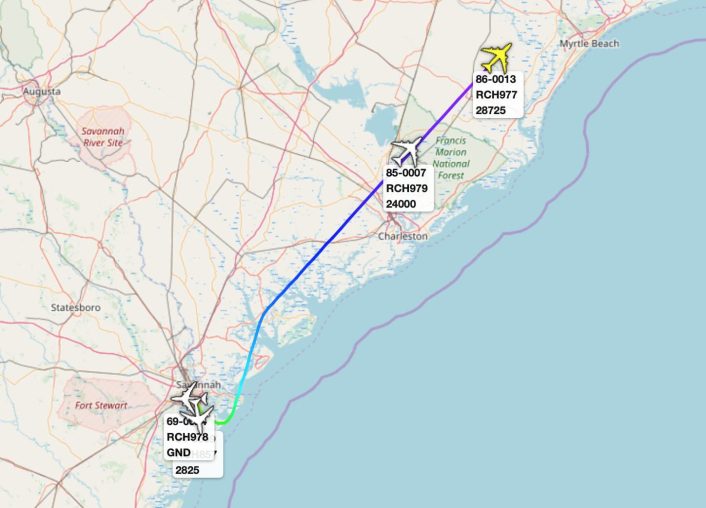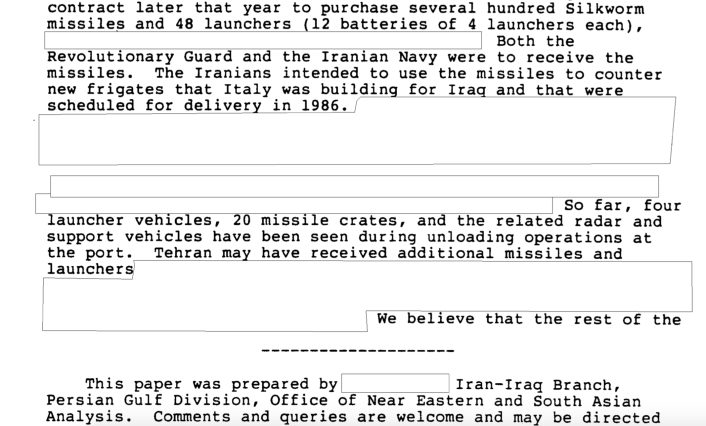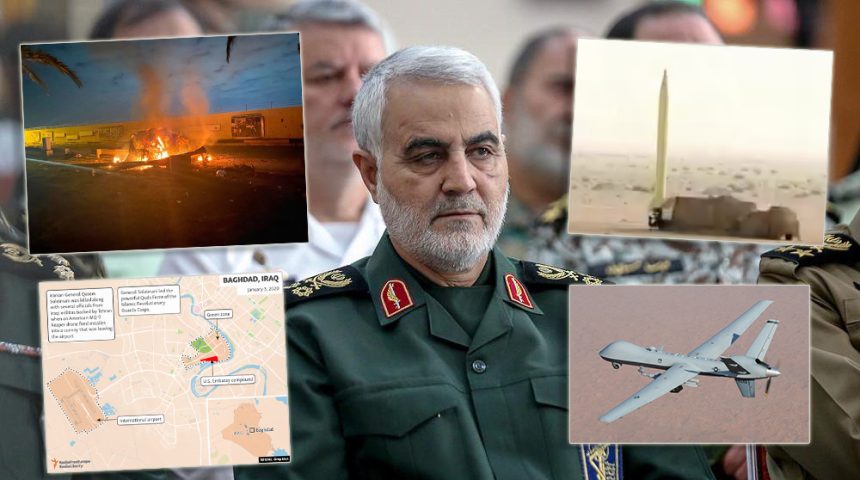Iran’s Limited Conventional Response Capabilities May Have Ominous Implications.
Behind the headlines of the U.S. drone strike that killed Iranian General Qasem Soleimani, head of the Iranian Revolutionary Guard’s Quds Force, speculation about an Iranian response to the U.S. strike has been widespread during the last 24 hours.
The U.S. Embassy in Iraq issued a statement early Friday Jan. 3 morning U.S. time for all American citizens to “Leave Iraq immediately”. As of Jan. 1, 2020, the U.S. State Department’s website had already issued a “Level 4” travel advisory for Americans. The U.S. Embassy notice reads, “Do not travel to Iraq due to terrorism, kidnapping, and armed conflict.”
The travel warning goes on to say, “U.S. citizens in Iraq are at high risk for violence and kidnapping. Numerous terrorist and insurgent groups are active in Iraq and regularly attack both Iraqi security forces and civilians. Anti-U.S. sectarian militias may also threaten U.S. citizens and Western companies throughout Iraq. Attacks by improvised explosive devices (IEDs) occur in many areas of the country, including Baghdad. On December 31, 2019, the Embassy suspended public consular services, until further notice, as a result of damage done by Iranian-backed terrorist attacks on the Embassy compound. U.S. Consulate General Erbil remains open and continues to provide consular services.”
Early Friday morning in the U.S., in what could be indications of a continued U.S. response to Iranian aggressions, a number of large military transport aircraft could be seen on the Global ADS-B Exchange flight tracking website headed east toward the Atlantic. At least one transport, a USAF C-5M, originated from Hunter Army Airfield, a staging area for U.S. special operations forces such as the Army’s 75th Ranger Regiment.

The Iranian capability to mount a significant conventional military response to the U.S. strike is limited however.
Iran’s naval capabilities are oriented toward blockades, mining and interdiction operations to control the seaborne movement of oil off their southern coast. While this capability has already exerted an economic impact as oil prices have begun to rise overnight in response to tensions, it is unlikely to exert significant military influence in the region.
Iran has vigorously pursued a program to threaten U.S. aircraft carrier task forces in the region. In May of last year, responding to the deployment of the aircraft carrier USS Abraham Lincoln to the Persian Gulf, Amir Ali Hajizadeh, head of the Revolutionary Guard’s air force, told news agency Al Jazeera that, “An aircraft carrier that has at least 40 to 50 planes on it and 6,000 forces gathered within it was a serious threat for us in the past. But now it is a target and the threats have switched to opportunities.” Hajizadeh went on to tell reporters, “If [the Americans] make a move, we will hit them in the head”.
The Iranian Air Force, while large, is also largely outdated.
A December 30, 2019 report by David Axe in NationalInterest.org said that, “Barred from acquiring new fighters, Iran has resorted to upgrading and copying its older planes.” Axe went on to write that, “Iran’s fighters are old and outdated. The ones that aren’t old are just new copies of old designs. The Air Force’s squadron fly American-made F-14s, F-5s and F-4s dating from the 1970s, some 1980s-vintage MiG-29s and Sukhoi fighter-bombers and a few J-7s that the Islamic Republic bought from China during the 1990s”.
Because Iran’s Air Force is made up of outdated and predominantly western-built aircraft, they are highly susceptible to U.S. counter-air tactics and defenses. For these reasons, Iran’s ability to launch airstrikes on U.S. interests in the region are largely non-existent.
#BREAKING: 5 or 6 F-14A Tomcat fighter interceptors of #Iran Air Force’s 8th Tactical Fighter Base are involved in Combat Air Patrol missions near border with #Iraq while several #IRIAF pilots are detained! #Iran‘s Islamic Regime is scared to face with a full-scale war with #US. pic.twitter.com/njauV0PBoj
— Babak Taghvaee (@BabakTaghvaee) January 3, 2020
In 2012, the U.S. Central Intelligence Agency released a formerly classified report on the shipment of the Chinese-designed Silkworm family of heavy anti-ship missiles to Iran. The agency concluded that at least 20 of the missiles had been shipped to Iran from China in the late 1980’s.

In 2006, Hezbollah guerillas launched a more advanced version of the Silkworm, a Chinese C-701, at an Israeli warship off the Lebanese coast. The July 14 2006 attack on the Israeli warship, the INS Hanit, killed four crew members and heavily damaged the Israeli corvette. More recently, Iranian small vessels have been photographed shadowing ships from the USS Abraham Lincoln battle group when sailing in the Iranian region. Given the capabilities of U.S. Navy anti-missile defenses however, it is unlikely an attack by older generation heavy surface-to-surface anti-ship missiles would be successful against a U.S. carrier. Although attempts can’t be ruled out, obviously.
One tangible threat to U.S. aligned interests in the region could come from Iranian surface-to-surface ballistic missiles. According to the Center for Strategic & International Studies, in a May 30, 2019 report, Iran likely fields a force of over 150 medium and short range ballistic missiles. Iran is also in joint development with North Korea on more advanced, long range ballistic missiles, but so far sanctions and import restrictions combined with ongoing U.S. attempts at moderation with North Korea have slowed progress on these more advanced ballistic missile programs. But even with Iran’s 150+ medium and short range ballistic missiles, analogous to Saddam Hussein’s Scud missiles of the Iraq wars, there is a shortage of U.S. targets within striking range.
The greatest threat of Iranian retaliation for the U.S. strike that killed General Qasem Soleimani is likely from Iranian state-sponsored terrorist activities. Iran has been regionally successful at supporting unconventional warfare activities often executed by state-sponsored proxies. These assets could threaten any U.S.-aligned interest, not only in the Middle East, but across Europe and in parts of Asia.
#BREAKING: #IRGC Aerospace Force has put all of its ballistic missile bases on high-alert. #IRGC affiliated news media of #Iran‘s Islamic Regime claim that they are ready to launch missiles at several air bases which host #USAF airplanes in #UAE, #Qatar, #SaudiArabia & #Jordan! pic.twitter.com/u7YqFtJ3wc
— Babak Taghvaee (@BabakTaghvaee) January 3, 2020
While Iran may not be able to execute a substantial conventional military response to the U.S. attack that killed General Qasem Soleimani while he was in Iraq, its state-sponsored terror operations can interject instability and fear well beyond the region for an extended period. This is the primary threat from Iran in retaliation to the U.S.
The 2018 U.S. State Department Country Reports on Terrorism said that Iran is, “The world’s worst state sponsor of terrorism”. The report went on to say that Iran had spent over $1 billion USD annually to, “support terrorist groups that serve as its proxies and expand its malign influence across the globe.” When the 2018 report was issued, Nathan Sales, the State Department’s Coordinator for Counterterrorism, told reporters in an official briefing that, “The Iranian threat is not confined to the Middle East — it’s truly global”.
As a result of these factors, a large-scale squaring off of the Iranian military against the U.S. military is unlikely. What is more likely is a greatly increased and lingering threat of Iranian-backed terrorism outside of region against U.S. interests. In the long run, this threat could actually be more costly than any immediate, conventional military confrontation in the Gulf region.









